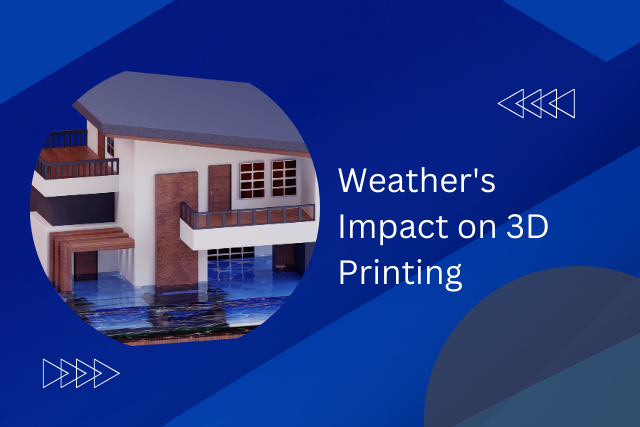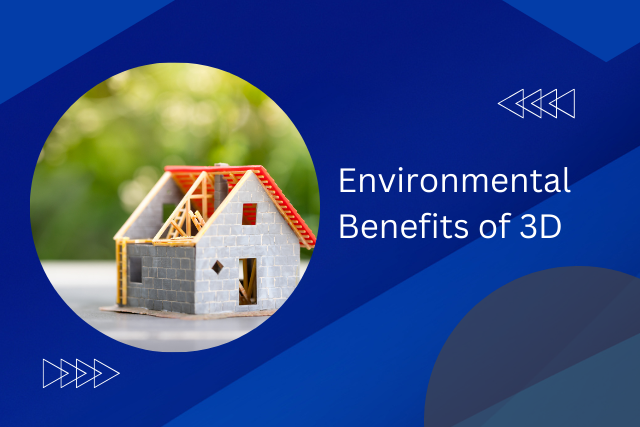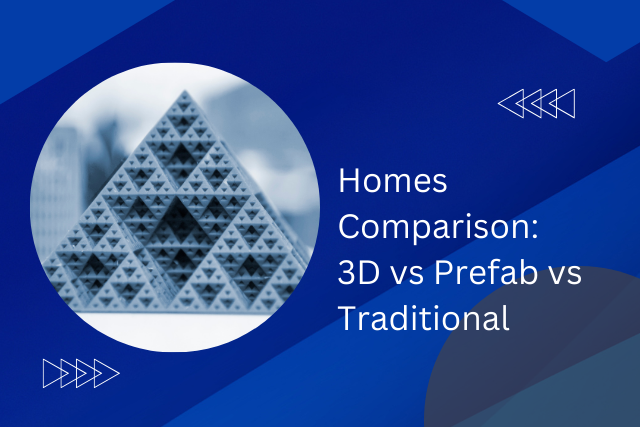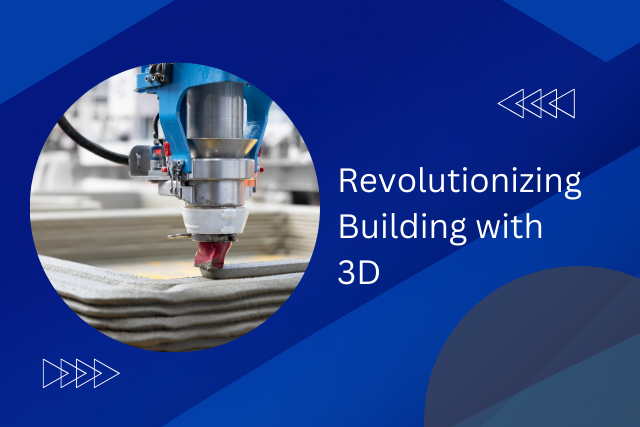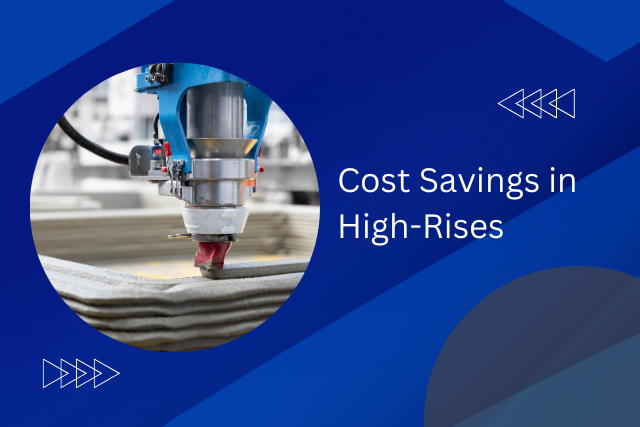In today’s world, building 3D printed homes is a new and exciting way to make houses. This method combines smart design with new technology to make building homes faster, more accurate, and better for the environment. First, people come up with special designs for these homes. Then, big printers use eco-friendly materials to build these homes from the bottom up. This way of making houses is not only quick but also helps in solving the problem of housing shortages around the world. By looking at how these homes are made step by step, we see how this technology can change the way we build houses in the future.
Conceptualizing the Design
At the center of every 3D printed home is a carefully made design. This design is like a map for creating new and exciting buildings. The first step, coming up with the design, is a time when people can be very creative and think of many different ways to make living spaces better. Today, architects and designers use advanced computer programs to make their ideas real. These programs let them try out new shapes, add features that are good for the environment, and put in technology to make homes smarter, all before they start building.
This way of working is modern and lets people move past the old limits of building. In this stage, the rules of how to design are not just followed; they are improved. This step is very important because it prepares for making homes that are not only strong but also fit what each person wants and dreams of. The special thing about 3D printed homes is not only that they can be built quickly or cost less, but also that they give a chance to completely change what we think of as a home for future people.
Creating the Blueprint
Moving from ideas to real-world objects, making the blueprint is a key step in turning creative thoughts into detailed plans for 3D printed homes. This stage combines creativity with strict accuracy. Architects and engineers work together to turn ideas into precise blueprints. This careful planning makes sure every part of the home is ready to be made with 3D printing technology.
The process of creating blueprints uses advanced software tools that give designers a lot of freedom and flexibility. These tools help in drawing every small detail and complex part of the home, making it possible to go beyond traditional building designs. This allows for each home to be different and match the owner’s wishes.
This step is also very important for making homes that are good for the environment, look great, and are well-made. The blueprint doesn’t just help in building the home but also leads to new ways of thinking about housing, showing a future where there are no limits to designing and making homes.
Preparing the Construction Site
After the design for a 3D printed home is ready, the very important step of getting the construction site ready comes next. This step is crucial because it makes sure the ground is prepared properly for the exciting 3D printing process that will happen.
The work starts by checking the land carefully to see if it’s good for building and looking for any problems that could make building difficult. Then, the team clears the site of any trash or things in the way, making sure it’s clean and ready for building. After that, they make the ground flat and solid to ensure a strong base, which is very important for the house’s stability.
They also plan out where utilities and other services will go, making sure the future house will have everything it needs to work well and be comfortable. The final step is putting in the foundation, which is specially made to hold up a 3D printed house.
This preparation mixes old building methods with new technology, making a way to build houses that is not only quick and accurate but also allows for lots of new ideas and designs.
Assembling the 3D Printer
The team is now setting up the 3D printer, a key tool that changes how we make houses. This step starts a new way of building, where being exact and efficient makes room for new types of houses and green ways to build. Putting the 3D printer together needs careful work and knowing well what the machine can do.
Each part of the printer is put together carefully, making sure that every sensor, nozzle, and moving part is just right. This care is very important because it affects how strong and good the printed houses will be. The team works hard, knowing that this technology helps them do things in building that were hard before.
When the printer is ready, it shows what people can do with smart ideas, turning raw materials into parts of a house. This way of building is not only fast but also cuts down on waste and is better for the environment. As the printer starts working, it shows a move towards a future where making beautiful designs and caring for the planet go together, changing how we think about making homes.
Mixing the Building Materials
Transitioning from the assembly of 3D printers, the next critical step in the creation of 3D printed homes involves the meticulous mixing of building materials. This phase focuses on selecting durable materials, customizing material formulas for specific architectural needs, and ensuring consistent quality across the construction process. By leveraging advanced technology and material science, this stage promises to revolutionize the efficiency and sustainability of home construction.
Selecting Durable Materials
Choosing strong materials means finding a smart way to mix different building materials. This makes 3D printed homes last longer and stand up better to weather and other outdoor problems. Using modern computer programs helps architects and engineers know how materials will hold up under various situations. This helps make sure the buildings are both tough and good for the environment. This careful choice lets builders make homes that are more than just places to live. They are long-lasting safe places. This is a big step towards making homes that last a long time, are good for the planet, and give people a chance to live in well-designed spaces that will last for many years.
Customizing Material Formulas
Customizing material formulas is a smart way to make 3D printed homes better. This means mixing different elements carefully to create a building material that is strong and can handle different weather conditions. By changing the mix, builders can make homes that keep heat in or out better, cost less to make, and can even fix small cracks by themselves. This gives architects and builders more freedom to design homes in new ways while being good for the environment. Being able to change the material to fit exactly what a project needs starts a new chapter in building homes that are both high-tech and good for the earth.
Ensuring Consistent Quality
To make sure every 3D printed home is excellent, it’s very important to mix the building materials correctly. This step makes sure each layer is strong and lasts a long time. Using new technology and special recipes helps keep the quality the same for all homes. This makes sure every home is strong, looks good, and lasts long. Builders can then give homeowners the chance to have a home that is unique and strong. So, the mixing process is very important for making sure 3D printed homes are of good quality.
The Printing Process
The process of making 3D printed homes starts with carefully making a digital plan. This plan tells the robotic printers how to stack building materials layer by layer. This method marks a new chapter in building, mixing innovation and accuracy to change how we think about designing and making buildings. At the core of this method is the smooth teamwork between software and hardware, turning digital plans into real buildings.
The printers, big machines that can move in many directions, push out a special kind of concrete or composite materials. These materials dry quickly and are very strong, making sure each layer sticks well to the one below. This isn’t just building; it’s a mix of technology and materials working together in a new way.
As the printer follows the set path, it places material very precisely, creating walls and parts of the building from the bottom up. This way of building lets us make complex shapes and designs that would be hard or impossible with old building methods. The speed and accuracy of 3D printing mean we can build homes faster and stronger, and with more creative freedom than ever before.
Post-Printing Modifications
Following the completion of the 3D printing process, the journey towards realizing a fully functional and aesthetically pleasing home enters a critical phase: post-printing modifications. This stage encompasses a variety of material finishing techniques and structural enhancement methods, each tailored to elevate the durability, safety, and visual appeal of the printed structure. By strategically applying these sophisticated modifications, we unlock the full potential of 3D printed homes, paving the way for innovative living spaces that meet the demands of modern dwellers.
Material Finishing Techniques
To make 3D printed homes strong and look good, several steps are taken after printing. These include sanding, sealing, and painting. These methods help remove visible lines, protect against water, and add colors or patterns that show the homeowner’s style. This allows people to have homes that are different and special, just like them. Also, special coatings can keep the home warm, protected from the sun, and safe from the weather. This makes these homes last longer and use less energy. By doing these steps after printing, 3D printed homes can be just as good, or even better, than traditional homes.
Structural Enhancement Methods
After making 3D printed homes look good and protecting them with different finishes, it’s important to look at ways to make them stronger and last longer. Adding extra support, like carbon fiber reinforcements, and putting on special coatings, help make these homes much stronger. These steps help the homes carry more weight and last longer against weather and other outside forces. Using smart materials that change with the weather can make these homes very sustainable and safe. This approach gives people building and living in these homes the chance to have spaces that are nice to look at, strong, and flexible.
Final Inspection and Handover
The final check and giving the house to its owner is a very important step in making 3D printed homes a reality. This part shows how far we’ve come in building technology and gives people a chance to make their homes just how they like them. The last check makes sure every part of the house is safe and meets the owner’s needs.
| Aspect | Description |
|---|---|
| Structural Integrity | Careful check of walls that hold up the house, how well it keeps heat or cold out, and if the house is strong overall. |
| Compliance Checks | Making sure the house follows local building rules, area rules, and cares for the environment. |
| Personal Customization | Looking over the design and smart features in the house to match what the owner wants. |
After everything is checked, the house is finally given to the owner. This is when the idea becomes a real home. Owners get a place that is safe, follows rules, and can be changed to show their style. This step shows how home owning is changing, becoming more flexible, and allowing more personal touches. This is a big move towards homes that can change to suit our needs and tastes, starting a new chapter in how we live.
Conclusion
The creation of 3D printed homes is a big step forward in building houses. This method starts with an idea and ends with checking the final product. It makes building faster, cuts down on waste and costs, and makes it easier for more people to have homes. As the technology gets better, this way of building will become even more efficient and good for the environment. The future of building houses is exciting, with 3D printing leading the way in changing how we make homes.

